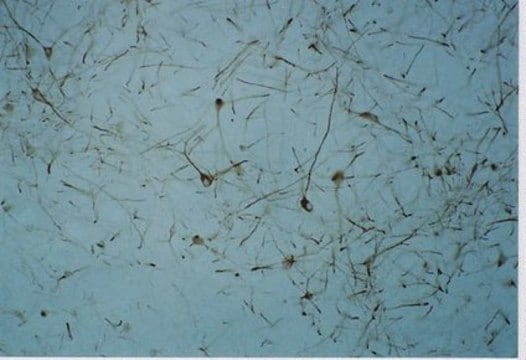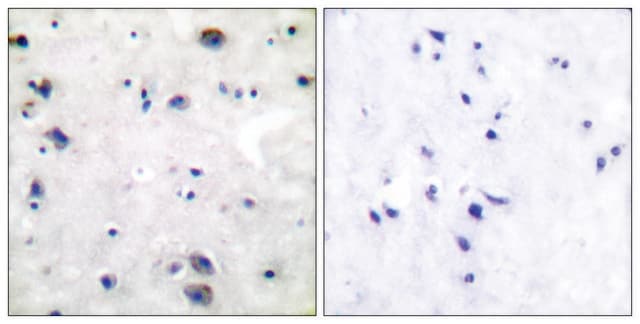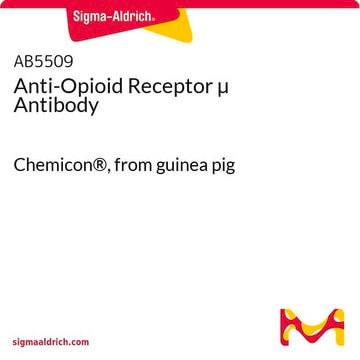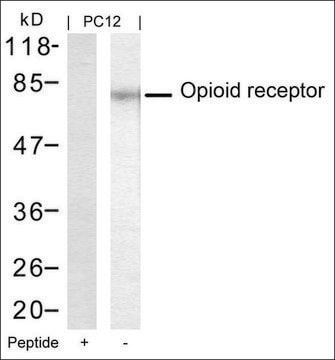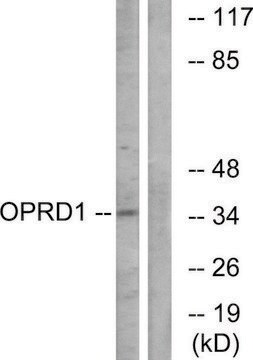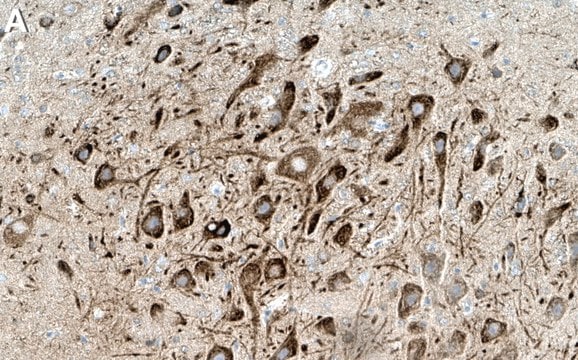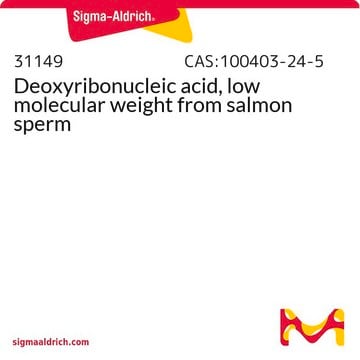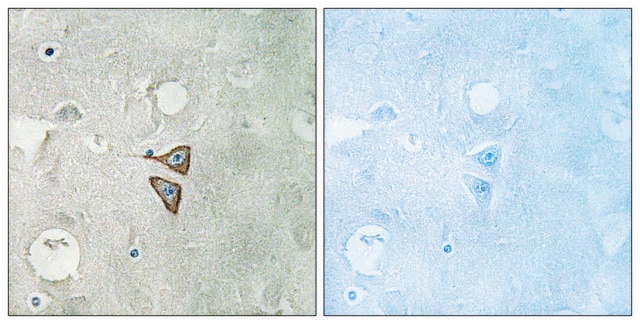AB5511
Anti-Opioid Receptor Antibody, µ, pain
serum, Chemicon®
Szinonimák:
mu opiate receptor, opioid receptor, mu 1
About This Item
IHC
WB
immunohistochemistry: suitable
western blot: suitable
Javasolt termékek
biológiai forrás
rabbit
Minőségi szint
antitest forma
serum
antitest terméktípus
primary antibodies
klón
polyclonal
faj reaktivitás
mouse, primate, rat, human
gyártó/kereskedő neve
Chemicon®
technika/technikák
immunocytochemistry: suitable
immunohistochemistry: suitable
western blot: suitable
NCBI elérési szám
UniProt elérési szám
kiszállítva
dry ice
célzott transzláció utáni módosítás
unmodified
Géninformáció
human ... OPRM1(4988)
Általános leírás
Egyediség
Immunogén
Alkalmazás
1:2,500-1:5,000 dilution of a previous lot was used.
Western blot:
1:1,000 dilution of a previous lot was used.
Immunocytochemistry:
1:2,500-1:5,000 dilution of a previous lot was used.
Optimal working dilutions must be determined by the end user.
Neuroscience
Neuroinflammation & Pain
Minőség
Western Blot Analysis:
1:500 dilution of this antibody detected Opioid Receptor on 10 µg of Human Liver lysate.
Cél megnevezése
Fizikai forma
Tárolás és stabilitás
Analízis megjegyzés
Spinal cord, liver lysate
Egyéb megjegyzések
Jogi információk
Jogi nyilatkozat
Nem találja a megfelelő terméket?
Próbálja ki a Termékválasztó eszköz. eszközt
Tárolási osztály kódja
10 - Combustible liquids
WGK
WGK 1
Analitikai tanúsítványok (COA)
Analitikai tanúsítványok (COA) keresése a termék sarzs-/tételszámának megadásával. A sarzs- és tételszámok a termék címkéjén találhatók, a „Lot” vagy „Batch” szavak után.
Már rendelkezik ezzel a termékkel?
Az Ön által nemrégiben megvásárolt termékekre vonatkozó dokumentumokat a Dokumentumtárban találja.
Tudóscsoportunk valamennyi kutatási területen rendelkezik tapasztalattal, beleértve az élettudományt, az anyagtudományt, a kémiai szintézist, a kromatográfiát, az analitikát és még sok más területet.
Lépjen kapcsolatba a szaktanácsadással